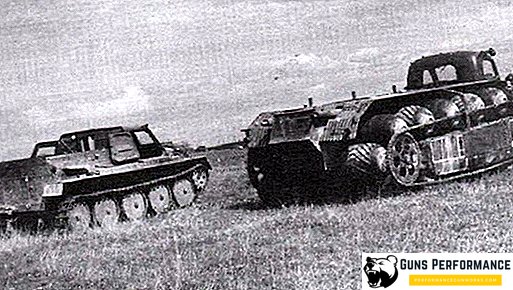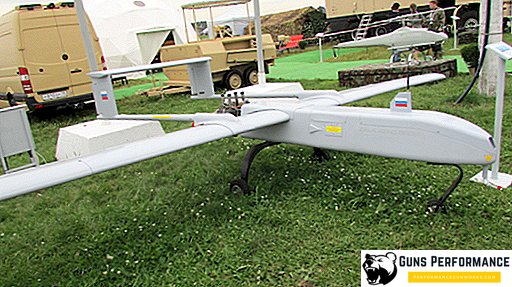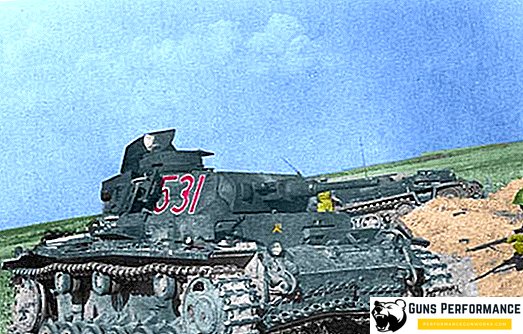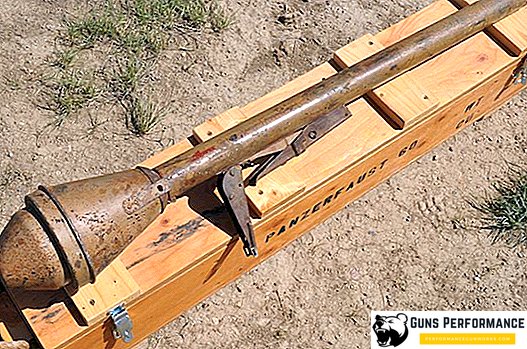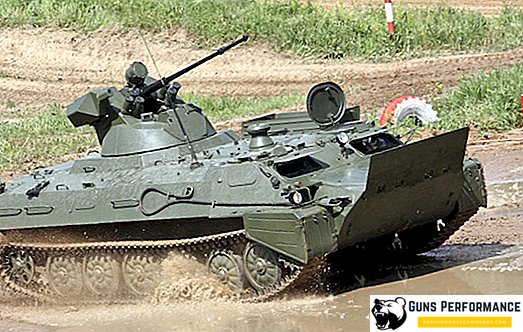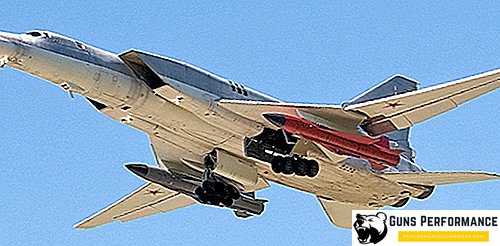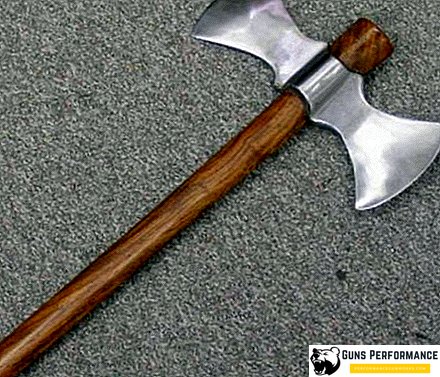
Sekir is one of the many types of battle axes, it is the most ancient slashing melee weapons. A distinctive characteristic of the ax from axes is a crescent-shaped blade, which is pointed in its outer part.
The ancient ax, the ancient Greek labris, was widespread. The lack of a butt was replaced by a symmetrical second blade, in the shape of a butterfly. It is believed that both Asians and Romans had weapons with the same forms.
In addition, the axes were known in most European countries, including Russia. They were mainly used by infantrymen for pushing riders off horses, while heavy armor made their way through them. For these purposes, the axes were equipped with rear long spikes, sometimes curved downwards.
Based on the name, it can be argued that the axes are the same axes, only with longer shafts, but they differ in balance. The well-balanced steel ax gave its owner great freedom of action. Axes for the most part act with the use of their weight, like a hammer or a mace.
Another distinctive characteristic of the ax from the ax is that with its help it was thrust. Feathers, pointed in front, were attached to axes, for example, like those of halberds. Sometimes in appearance the weapon could resemble hybrids between spears and swords.

The main characteristics of the ax
As a rule, axes consist of a shaft, blades, and also a counterweight at the end of the shaft. The pole of an ax consists of ordinary sticks, sometimes wrapped to prevent slipping of hands. The length of the pole depends on the method of use:
- Marines - the shaft to two and a half meters, the weapon was called "drill halberds";
- Cavalrymen - a little less than a meter, "horse ax";
- Boaters - up to three meters, "boarding halberds."
Battle Axes
Warheads were pulled through the holes and fastened to the poles with nails or rivets. The ax blade has a wide variety of shapes. However, for the most part they had crescent-shaped blades that did not extend further to the sides of the shafts themselves, because the farther the blades moved away from the shafts, the more unbalanced were the axes, which negatively affected the possibility of normal fencing.
The use of butterfly axes has shown that it is not easy to strike with such axes. The weapon itself turned out to be extremely weighty, and besides, striking could create quite considerable inert force. There were also such axes in which the blades exceeded the shafts themselves and served as counterweights for themselves.

Often, the ax blade in the front part was sharpened in such a way that it was possible to deliver piercing blows, some axes had peculiar spikes. There were instances in which between the blades and spikes or blades and shafts there were slots used to grab the blades of enemies, but for this you need to master the fencing technique with an ax.
From opposite sides of the blade, in the locations of the butts, in some types of axes, hooks were used. They were used for a variety of tactical purposes, for example, in order to grab the sides of ships during boarding or to drop riders off their horses.
The chopping parts of the axes with their length could vary from ten centimeters to the blades equal in length to the sword-shaped blades. In the lower parts of the axes of the blades there are protrusions below the mounting points themselves, which are called braids and are used for the best fastening of the blades to the pole.
In the axes there are also counterweights, which are presented in the form of simple metal knobs or spikes, which were used to support the ground. Without counterbalances with axes, it would be hard to cope.

Multifunctional axes
The multifunctionality of axes makes it possible to use them as spears. The difference can only manifest itself in length, as well as in the fact that balanced axes cannot be used as spears.
Warriors with horses were pulled off with axes or blows were struck to the region of the lower limbs, which were almost not protected. So, for example, spears used in defense, axes and swords in the attack, while the axes used as the golden mean between these weapons. By the way, in some armies there were ax-reservists who defended the flanks, in the Russian army they were called spearmen.
The most famous types of axes
In different countries, the axes looked different and were used, based on the shape of the blades, for different purposes. All types of axes are not counted, but here are the most famous:
- Halberds;
- Berdyshi;
- Brodeksy;
- Lohaber axes;
- Armenian Sacravors;
- Scandinavian axes;
- Poleksy;
- Guizarmes;
- Glaive;
- Indian bhuji;
- Japanese "nagamaki" and "naginaty";
- Chinese "guandao";
- Naturally Russian "sovnya";
- And others.

Sekira Perun
Apart from the fact that the ax was an excellent weapon in battle, its form was even used for making charms. One of them was called the "ax of Perun" and was an ax with a pair of sharp blades fixed on a small pole. Ax as a talisman was worn on the chest or on the belt. Usually iron, bronze or lead was used as mascot material.

In the Slavic mythology of Perun, the role of the god of thunder and lightning was distinguished. He was revered as a symbol of the power of the prince and the patron of his squad. Perun was portrayed as a black-haired, red-bearded, strong man using a chariot, which was set in motion by two winged stallions.
He used his invariable attributes: arrows for lightning, spear, ax, and other weapons. The most victorious weapon was considered the ax of Perun, which was used by him in countless battles. In one legend tells of the battle with the Serpent, in which Perun managed to restore the presence of daylight with his arms. Following these events, the ax began to be revered as the personification of victory.


